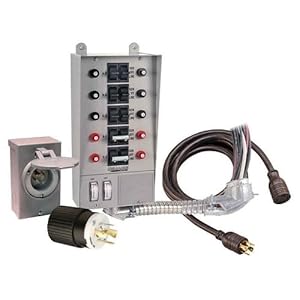Install an Auxiliary Fuel Tank in Your Pickup, Then Buy Gas or Fuel on Your Schedule
RVers who pull travel trailers or fifth-wheel trailers with their pickup trucks know that their range is somewhat limited. Maybe it's 300 miles; maybe even less.
Install an Auxiliary Fuel Tank in Your Pickup, Then Buy Gas or Fuel on Your Schedule
Install an Auxiliary Fuel Tank in Your Pickup, Then Buy Gas or Fuel on Your Schedule
Install an Auxiliary Fuel Tank in Your Pickup, Then Buy Gas or Fuel on Your Schedule
Install an Auxiliary Fuel Tank in Your Pickup, Then Buy Gas or Fuel on Your Schedule
They also know or will soon learn that they must think well ahead regarding that required fuel stop. How far before they will run empty should they stop to fill up? Where is there a station which they can get into and out of the pumps without damage? Where is a station of the desired brand or which will take the desired credit card? What is the price, compared to other locations along the route? And so on.
It's not a simple question to answer. Coming up with the answer often requires significant Mental energy and creates stress. Stress which no River needs.
I'll use my F-350 Power Stroke as am example.The factory tank holds 38 gallons. That means that while towing my trailer I can almost always get 300 miles on a full tank, and under the most ideal conditions I might be able to get 400 miles.
Here in the Midwest, finding stations at appropriate spots is not a problem. But how about more sparsely populated areas, where it can easily be 100 miles between towns? And do those towns have acceptable places to fuel? It can be a problem!
With my wife's encourageMent, I added a combination toolbox/tank. It holds 45 gallons in the lower part, while the upper seven inches or so is on toolbox. That's a great place for a pAir of battery jumper cables, a tow chain, Supply of diesel fuel additive, spare oil and oil Filter, a lug wrench, and tie-down straps.
This tank has been greatfor our marriage! Now planning fuel stops is a non-issue because we have enough range that we can easily plan to stop at our favorite places to fill up. With this setup, I tell people that I can run 400 miles, then must find a place to fuel up within the next 300 miles!
Now it is relatively easy to avoid buying fuel in cities or even enTire states where the price is "too high."
The results of adding this auxiliary tank are simple: Now we buy fuel on our terms, not when we must. It makes a world of difference in the expenditure of Mental energy regarding fueling.
There are several different approaches to aux tanks, from the rather sophisticated to the brutally simple.
The simplest version is just a tank with a pump and a hose. When you want to use fuel from the auxtank, you stop, take the end of the hose, stick it in the filler pipe of the main tank, and turn the pump on. This is simple, easy to install, and easy to understand. And potentially messy! Don't forget to turn the pump off!
The most sophisticated one of which I am aware is the system sold by Transfer Flow. With this system, fuel is automatically transferred from the aux to the main tank. In "control panel" in the cab provides a digital readout of the amount of fuel in each tank. Because of the automation and information provided, this system is considered by many to be the top of the line into auxiliary fuel tank systems.
I chose the middle ground and, as they say, "It works for me!"
The system I installed has a switch in the cab labeled "Main" or"Auxiliary." When in the "Auxiliary" position, fuel feeds from the aux tank directly to the engine. The standard fuel gauge indicates the amount of fuel in the aux tank.
When switched to the "Main" position, fuel flows from the main tank directly to the engine and the fuel gauge indicates the amount of fuel in the main tank.
For me, this system is great: Simple, uncomplicated, not messy fuel gauge readout. And simple fuel management. It serves us well.
There's an added benefit which no one mentions. It provides a back-up fuel pump! I've not heard of fuel pumps going bad in pickups, but I have replaced fuel pumps in two cars. A failed fuel pump can leave you stranded and be expensive to replace. With many auxiliary fuel tank systems, you have a second fuel pump! Thiscreates a redundant system, just like many of the systems in Airplanes where the results of a failure of the main system are simply unacceptable.
If your spouse or you spend too much time considering fuel stops or if you simply have to stop too often, you are a great candidate for an auxiliary fuel tank. It puts you in the drivers seat!
Copyright 2007 Keith a. Williams
Install an Auxiliary Fuel Tank in Your Pickup, Then Buy Gas or Fuel on Your Schedule
No comments:
Post a Comment